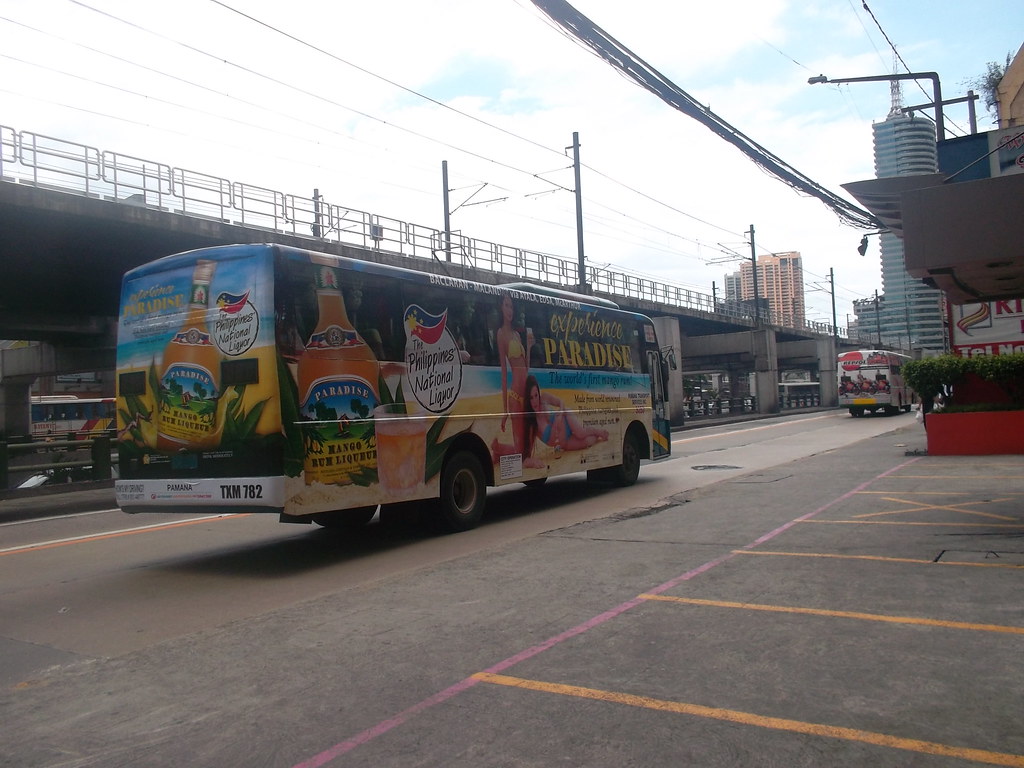Boost Your Company with Transit Advertising Philippines
Boost Your Company with Transit Advertising Philippines
Blog Article
Recognizing the Function of Transportation Advertising And Marketing in Enhancing Brand Visibility and Customer Interaction
Transportation advertising has actually arised as a critical component in the marketing landscape, using unique chances for brand names to elevate their exposure and involve consumers properly. With the ability to get to a varied and captive audience throughout their day-to-day commutes, these advertising and marketing techniques are not just regarding exposure; they have to do with developing purposeful connections with prospective customers. As we discover the complex benefits and innovative methods within transportation advertising, it becomes vital to think about just how these components jointly influence customer assumption and behavior, raising questions concerning their long-term effect on brand commitment.
Interpretation of Transit Advertising
Transit advertising refers to the technique of advertising items, services, or brand names with advertisements placed in and around public transport systems. This form of advertising encompasses a variety of positionings, consisting of posters on buses and trains, electronic screens at transportation terminals, and covers on the outside of lorries. It aims to get to a varied audience, taking advantage of the high foot web traffic connected with public transportation.
Transit advertising and marketing is purposefully positioned to capture the interest of travelers, who commonly spend significant time traveling or waiting. By integrating advertisements right into the daily regimens of people, brands can develop a lasting impact and foster brand recognition. The medium is particularly efficient in city environments, where public transport is a main mode of traveling.
Additionally, transportation advertising can facilitate localized targeting, permitting organizations to get to specific demographics based upon transit routes and terminal areas. As city populations expand and the use of public transport rises, this advertising and marketing technique has acquired importance as an essential part of incorporated advertising and marketing strategies. The dynamic nature of transportation advertising, integrated with its capability to engage customers in a captive setting, underscores its value in modern advertising and marketing techniques.
Benefits of Transportation Advertising And Marketing
The performance of transit advertising lies in its ability to deliver a plethora of advantages to brands looking for to boost exposure and involvement. Among the main advantages is the extensive reach it provides; transportation advertisements can effectively target varied demographics across city locations, reaching both commuters and pedestrians alike. This wide exposure considerably increases brand name awareness.
One more benefit is the high regularity of perceptions. As transportation lorries follow well-known courses and quit at multiple places, they produce repeated direct exposure that reinforces brand name messages. This regularity fosters experience, which is vital in customer decision-making.
Transit advertising is also cost-effective contrasted to other media systems. Given its extensive reach and potential for high impacts, brand names usually experience a reduced cost per thousand impacts (CPM), maximizing their marketing spending plan.
In addition, transportation ads can create a feeling of neighborhood connection. By straightening with regional transit systems, brands can resonate with regional target markets and cultivate a feeling of neighborhood pride. This local technique boosts brand loyalty and interaction, making transportation advertising and marketing a compelling option for services intending to strengthen their existence out there.

Efficient Strategies for Transit Projects
To optimize the influence of transit projects, brands need to take advantage of tactical planning and execution tailored to their target audience. Initially, determining the market attributes of the audience using public transportation is important. This permits brand names to create customized messaging that reverberates with prospective Homepage consumers.
Following, choosing the appropriate transportation mediums is necessary. Whether using bus covers, train posters, or digital displays, each tool has one-of-a-kind benefits that can improve presence. As an example, vivid visuals on bus covers can stand out, while digital ads can be upgraded frequently to reflect prompt promos.
In addition, incorporating a cohesive branding technique throughout transportation platforms guarantees uniformity and strengthens the brand's Read Full Report identification. Using remarkable taglines and captivating styles will strengthen brand recall among travelers.
By employing these approaches, brand names can successfully harness the potential of transportation advertising and marketing, fostering better recognition and connection with their target audience. Ultimately, a well-executed transit campaign can drive substantial growth in brand visibility and customer involvement.

Determining Impact and Involvement
In examining the efficiency of transit marketing campaign, exact dimension of influence and interaction is essential for brand names seeking to optimize their marketing methods. Metrics such as reach, regularity, and impacts offer fundamental information to assess visibility. Examining these variables helps establish the amount of prospective customers are subjected to the ads throughout their daily commutes.
Engagement can be additional gauged through consumer interactions, such as internet site web traffic, social media mentions, and straight actions to calls-to-action featured in the ads. Making use of devices like QR codes or special URLs can help with tracking of customer behavior straight connected to transportation projects. Surveys and feedback mechanisms also work as beneficial techniques to gather qualitative data on consumer understandings and recall of the ad.
Furthermore, progressed analytics and acknowledgment versions can associate transit exposure with succeeding investing in behavior, providing understandings into the return on financial investment. By employing a thorough technique that combines measurable and qualitative procedures, brand names can establish a nuanced understanding of their transit advertising and marketing influence. Inevitably, this data-driven approach makes it possible for brand names to fine-tune their campaigns, guaranteeing they reverberate successfully with target audiences and improve general brand visibility.
Study of Successful Projects
Effective transit ad campaign offer as compelling instances of just how reliable strategies can boost brand name presence and engagement. Transit Advertising Philippines. One notable situation is the "I Love New york city" project, which changed the city's photo and drew in millions of vacationers. By utilizing metro ads, signboards, and bus wraps, the project created a site web strong, cohesive brand identity, resulting in a substantial uptick in tourist and regional company patronage
An additional exemplary project is Coca-Cola's "Share a Coke" effort, which leveraged transit marketing to customize the brand experience. By featuring popular names on promotional materials across various transportation systems, Coca-Cola cultivated a much deeper emotional link with customers, encouraging them to share their experiences on social media.
Furthermore, the "Got Milk?" campaign effectively utilized public transport ads to get to a broad audience, reinforcing the message of the significance of milk in a balanced diet regimen. The campaign saw a quantifiable boost in milk intake in target demographics.
These case studies show that when carried out attentively, transit advertising can substantially enhance brand name presence, foster customer interaction, and drive measurable outcomes, demonstrating its vital role in contemporary advertising techniques. - Transit Advertising Philippines
Final Thought
In final thought, transportation advertising and marketing works as a vital tool for boosting brand visibility and fostering customer involvement. By making use of purposefully put advertisements within public transportation systems, brand names can efficiently reinforce and reach diverse audiences recognition via constant direct exposure. The application of targeted messaging and ingenious methods further amplifies the effect of transportation projects. Eventually, the ability to gauge interaction and examine effective situation research studies highlights the efficiency of transit advertising in driving brand name commitment and customer interactions.
Transportation advertising and marketing has emerged as an essential element in the advertising landscape, providing one-of-a-kind possibilities for brands to raise their exposure and engage consumers effectively.Additionally, transit advertising and marketing can facilitate localized targeting, enabling services to reach specific demographics based on transit routes and station places.In assessing the performance of transit advertising campaigns, accurate measurement of impact and involvement is crucial for brand names looking for to enhance their advertising and marketing methods.Effective transit advertising campaigns offer as compelling examples of how reliable techniques can boost brand name visibility and involvement.In verdict, transportation marketing serves as an important tool for improving brand name visibility and promoting customer engagement.
Report this page